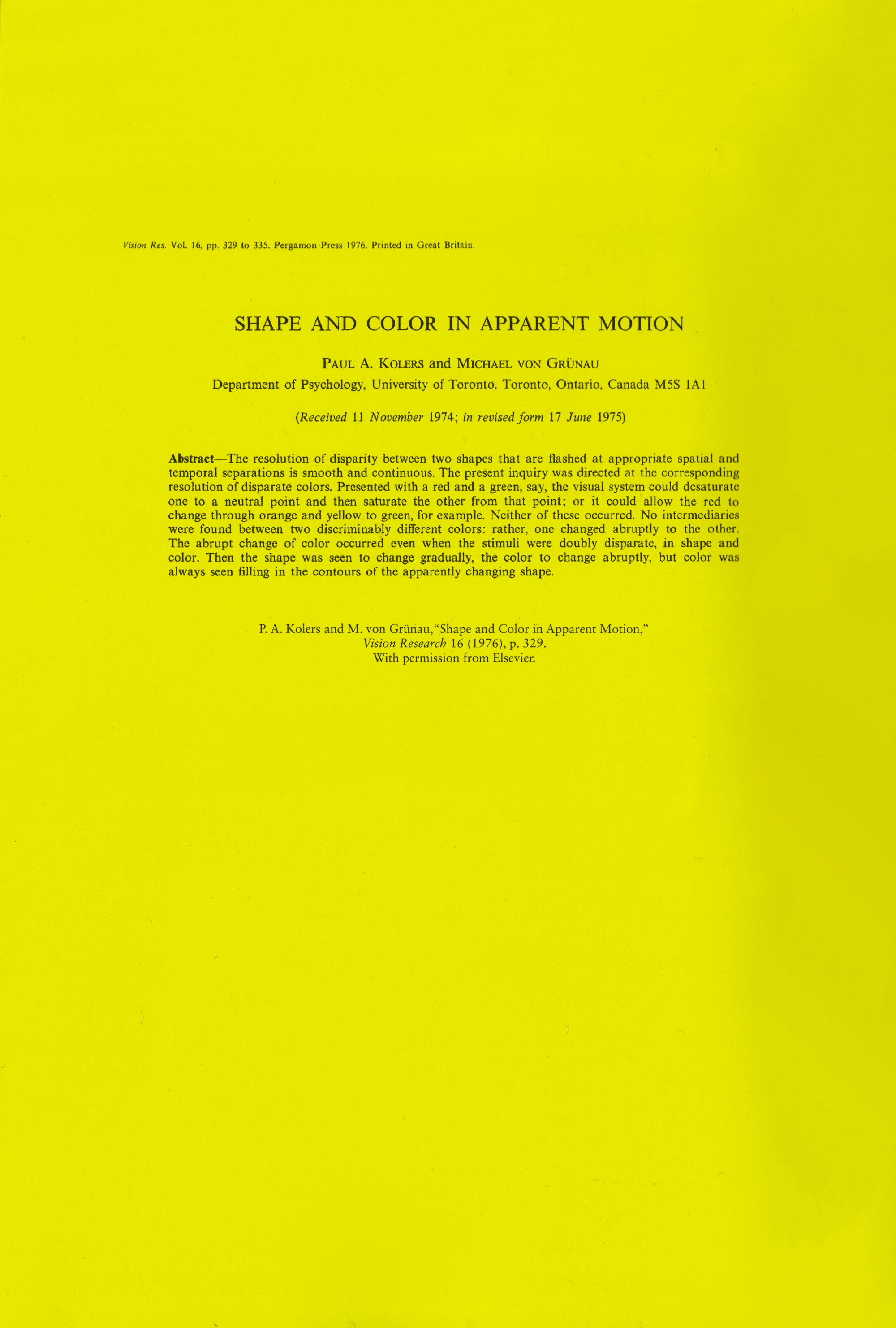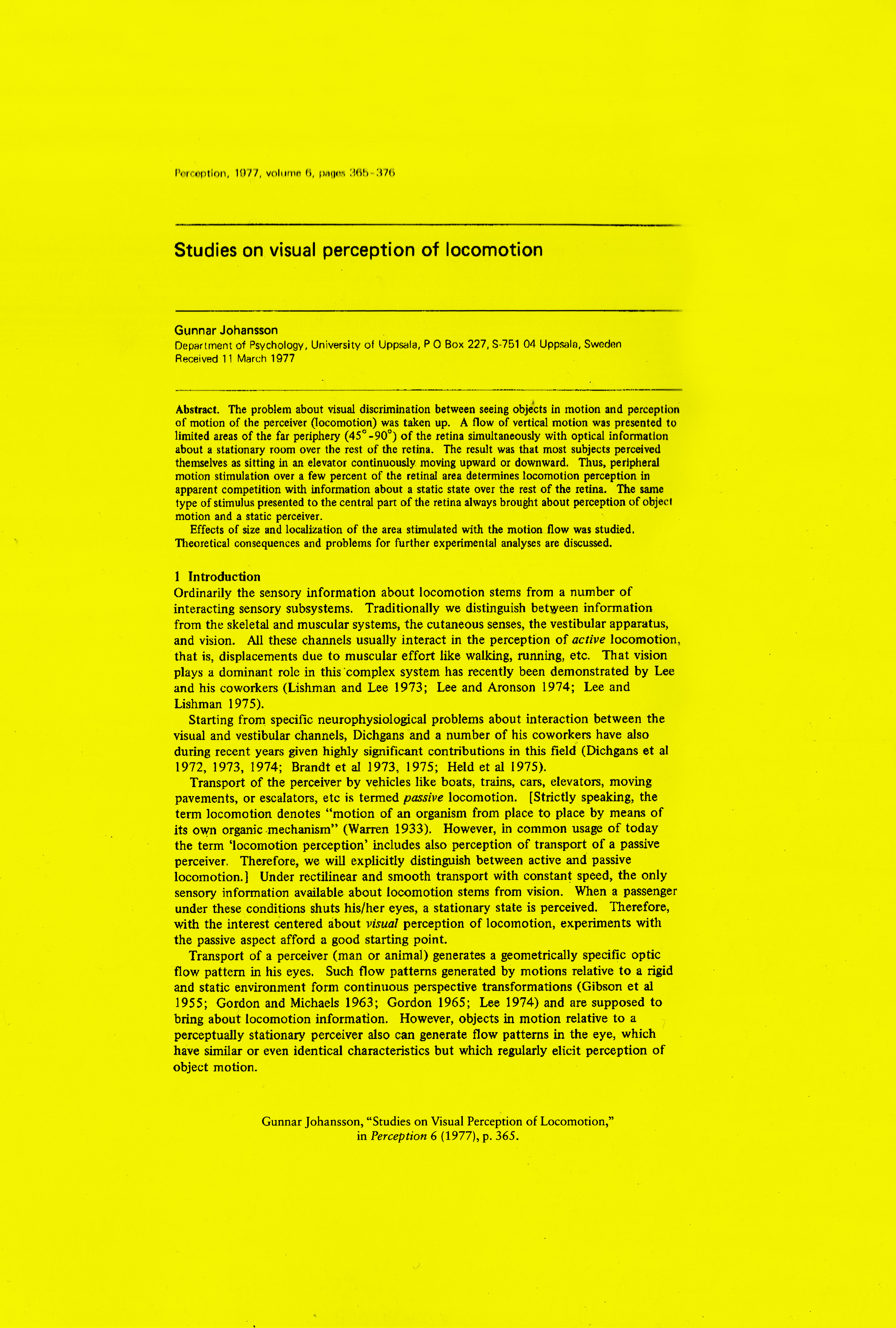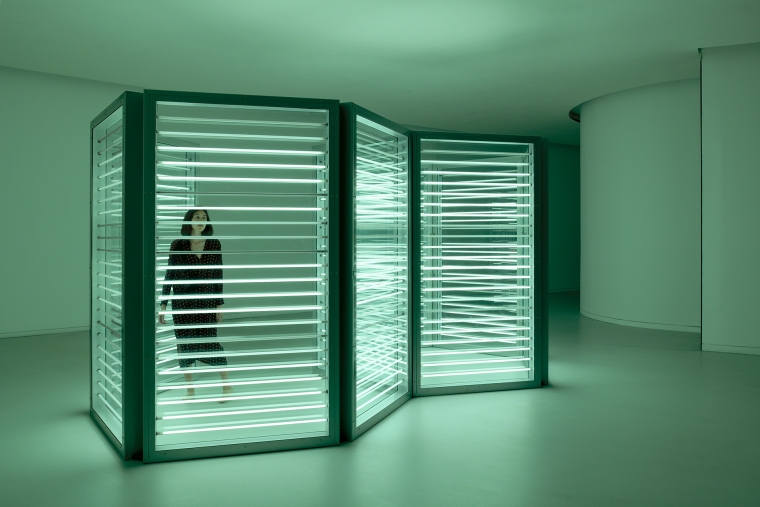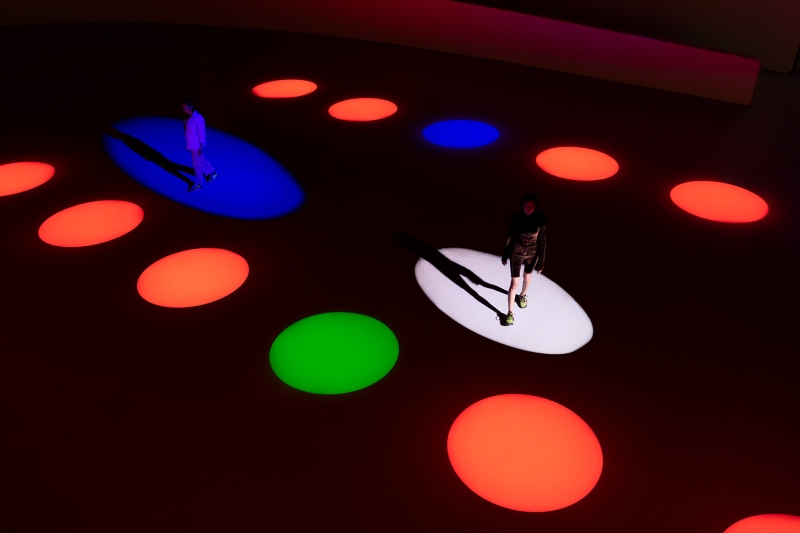The Science Behind the Art
Carsten Höller
With a background as a scientist, Carsten Höller’s artistic work is largely informed by scientific concepts and phenomena. Behind the selection of works on show in the exhibition DAY at maat, dating from 1987, when the artist was still working as a scientist, until today, lies a larger and deeper scientific-artistic inquiry. Following this inquiry, some of the principal concepts pertinent to the artist’s work are explored in more depth here.
This article into the science behind some of Carsten Höller’s art is based on notions and excerpts from the book Carsten Höller. 2001–2010. 184 Objects, Experiments, Events, edited by Barbara-Brigitte Mak and published by Hatje Cantz in 2010.
Phi Phenomenon

Carsten Höller's Phi Wall II, 2002, installed at maat. Photo: Attilio Maranzano, courtesy of the artist and EDP Foundation / maat.
In 1912, Gestalt psychologist Max Wertheimer described what he termed the Phi Phenomenon: when viewing two adjacent, fixed points of light that alternate on and off, one “sees” an imaginary third point that appears to jump back and forth between the two fixed points. In 1976, Paul A. Kolers and Michael von Grünau observed that this imaginary point changes colour in midcourse when the fixed points are colored differently. The phenomenon is striking, because the viewer even “sees in motion” the imaginary point of light and, as the case may be, “allows the color to change,” even though the next fixed point hasn’t yet flashed. Daniel C. Dennett explains this as the mind’s way of rearranging short intervals of linear time in order to produce sense:
“How are we able … to fill in the spot at the intervening place-times along a path running from the first to the second flash before that second flash occurs?’ (Goodman, 1978, p. 73)
[…] Suppose the first spot is red and the second, displaced, spot is green. […] How does the brain accomplish this sleight of hand?
The principle that causes must precede effects applies to the multiple distributed processes that accomplish the editorial work of the brain. Any particular process that requires information from some source must indeed wait for that information; it can’t get there till it gets there. This is what rules out ‘magical’ or precognitive explanations of the color-switching phi phenomenon. […] So the (illusory) discrimination of red-turning-to-green has to be accomplished after the discrimination of the green spot. But then since what you consciously experience is first red, then red-turning-to-green, and finally green, it (‘surely’) follows that your consciousness of the whole event must be delayed until after the green spot is (unconsciously?) perceived. If you find this conclusion compelling, you are still locked in the Cartesian Theater” (Daniel C. Dennett, Consciousness Explained, London, 1991, pp. 114-15).
Indeed, the phenomenon functions only if a delay of at most five hundred milliseconds elapses between the turning on and off of each point of light. (p. 268)
Phi Wall II (2002) is a wall of “jumping lights”, based on the phi phenomenon. Two points are “jumping” at the same time. Both light points can “jump” in up to six different directions from the location of the last illuminated disc. However, the distance between two consecutively illuminating discs remains always the same.
In the piece Bambi (2006), the corresponding red or green light bulbs blink in alternation, at the necessary frequency that causes the object to appear as it’s constantly jumping back and forth between the two forms.
7.8 Hz

Right: Carsten Höller's 7.8 Hz (Vitrine with Golden Fly Agaric Mushrooms), 2019, installed at maat. Photo: Attilio Maranzano, courtesy of the artist and EDP Foundation / maat.
Left: Carsten Höller's Light Wall (Outdoor Version), 2021. Photo: Attilio Maranzano, courtesy of the artist and EDP Foundation / maat.
At several points in the exhibition – Bambi (2006), Light Corridor (2016), 7.8Hz (Vitrine with Golden Fly Agaric Mushrooms) (2019), 7.8Hz (Reduced Reality App) (2021), Light Wall (Outdoor Version) (2021) – simultaneously illuminating lightbulbs flicker at a frequency of 7.8Hz. In Light Wall, a stereo signal “clicks” continuously back and forth between two audio speakers. This induces optic and acoustic hallucinations: viewers experience modulating fields of colour with their eyes open or shut, or perceive themselves or what is said by others around them in altered ways. Light Wall is also capable of influencing moods or states of mind. Light Wall was originally conceived as a device for self-experimentation to test Hans Berger’s 1924 hypothesis that brainwave frequencies can be altered by external stimuli (Hans Berger, “Das Elektrenkephalogramm des Menschen,” 1938). According to Berger, states of consciousness and sleeping occur within specific brainwave frequencies and are therefore capable of being influenced. However, the incessant turning on and off of the lights – in contrast to strobe lights – primarily induces, due to the slow illumination rate of the filaments, an erratic state of mind caught “between” poles of light/dark, awake/asleep, I/other, etc. Light Wall (Outdoor Version) (2021) is part of a series of variable Light Walls, presented in various sizes and formations. (p. 282).
In the piece 7.8 Hz (Vitrine with Golden Fly Agaric Mushrooms) (2019), the lights in the vitrine flicker at the hallucination-inducing frequency of 7.8 Hz, which makes the 10 golden fly agaric mushroom sculptures in the vitrine seem to “dance” and “rotate” around their own axis.
|
After earning a PhD in phytopathology with a specialisation in chemical ecology at Kiel University in Germany, Carsten Höller has devoted himself exclusively to art since 1993. Höller applies his training as a scientist to his work as an artist, focusing particularly on the nature of human reasoning and interrelations. Notable installations include “Soma” (2010), a three-dimensional tableau vivant at Hamburger Bahnhof, in Berlin, featuring reindeer fed with fly agaric mushrooms; “Test Site” (2006), a series of giant slides installed in Tate Modern’s Turbine Hall; and “Upside-Down Goggles” (2009–11), an ongoing participatory experiment using vision distorting goggles. For Höller, the museum can be seen as a space for experimentation and for testing ideas and concepts that can eventually be enacted on a larger scale. “Synchro System”, referring to the synchronisation between viewer and artwork, between human beings and “machine effects”, was conceived by Höller for Fondazione Prada, Milan (2000) and consisted in the realisation of a “village of possibility” composed of psychophysical stimuli and interactive tools. Other major solo exhibitions by Höller include “7,8 Hz” at Le Consortium in Dijon (2004); “Carrousel” at Kunsthaus Bregenz in Austria (2008); “Experience” at New Museum in New York (2011); “Doubt” at Pirelli HangarBicocca in Milan (2016); and “Sunday” at Museo Tamayo in Mexico City (2019).
|
DAY (maat, 05/10/2021 – 28/02/2022) is a monographic exhibition by Carsten Höller curated by Vicente Todolí which brings together a vast array of works producing light and darkness, ranging from sculptures with lamps to projections and architecture dating from 1987, when Höller was working as a scientist, until today.
|

|
Page from "Shape and color in apparent motion" by Paul A. Kolers and Michael von Grünau, in Carsten Höller. 2001–2010. 184 Objects, Experiments, Events, Hatje Cantz, 2010, p. 250. |

|
Page from "Studies on visual perception of locomotion" by Gunnar Johansson in Carsten Höller. 2001–2010. 184 Objects, Experiments, Events, Hatje Cantz, 2010, p. 168. |
|
7.8 Hz MEDITATIONS The programme 7.8 Hz Meditations, curated by Mariana Pestana in dialogue with Carsten Höller’s exhibition at maat, was a programme of three guided meditations, comprising a reading and a live concert created by contemporary thinkers and composers (Michael Marder with Maxwell Sterling, Federico Campagna with Joana Gama and Luís Fernandes, and Sofia Lemos with Ece Canli). The division of light between day and night caused by the rotation and translation of the Earth is perhaps the most literally cosmic experience we have access to on a daily basis. The programme is based on the 7.8 Hz frequency, a unit of measure that also converges celestial and terrestrial phenomena. 7.8 Hz is the Earth’s electromagnetic resonance, produced by discharges of energy such as lightning and thunder between the surface of the planet and the ionosphere. Interestingly, 7.8 Hz is also the frequency of the human brain when in a state of almost meditative relaxation, between consciousness and unconsciousness, and can be induced by exposure to light sequences (as in Carsten Höller’s work). Starting from this frequency, the programme offered the public a series of text and sound therapeutic compositions to reflect on terrestrial coexistence and explore other ways of seeing and thinking about the extreme present we currently live in.
|
ELEVATOR PHENOMENON Swedish psychologist Gunnar Johansson first described the elevator phenomenon in 1977. The Elevator (2004), an installation with white dots falling continuously from top to bottom on a black background on two monitors opposite from each other, was shown in the exhibition Carsten Höller – Gunnar Johansson, named after the research scientist, at Galerie Micheline Szwajcer. Double Neon Elevator (2016) applies the elevator phenomenon to a walk-in space: the neon tubes inside the seven vertical wall elements are configured in such a way that the light appears to “move upward or downward.” This creates in the viewer standing inside the installation the sensation of going up or down in an elevator. Because of the transparency of the construction, not only does the Neon Elevator “go up or down”, but the entire surrounding room does as well.
|







